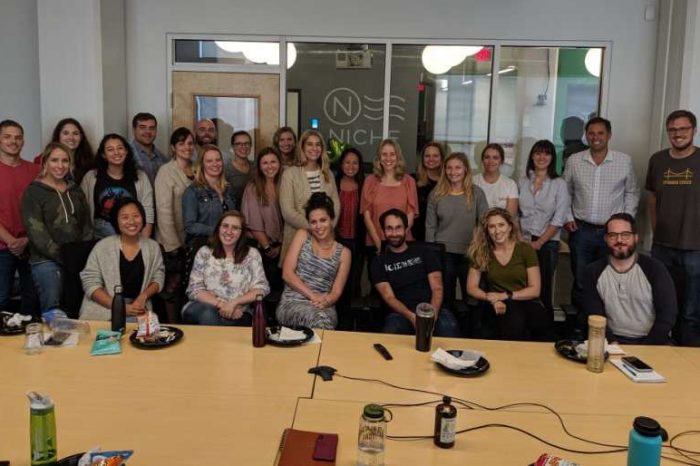Stark digital divide in internet speeds amid COVID-19, Fastly data reveals
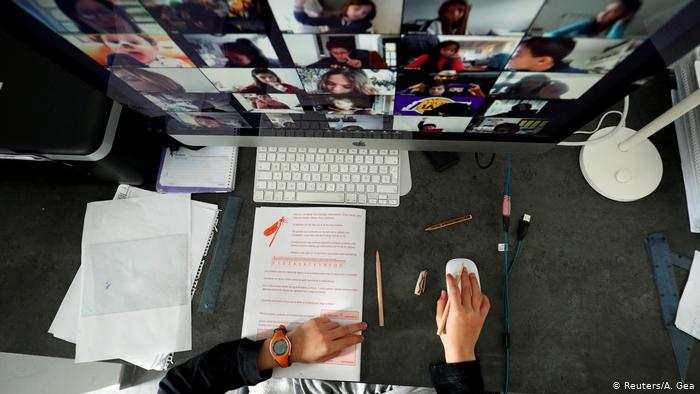
Last week, we wrote about Fastly after the cloud provider released a report on internet performance per U.S. states and a few regions. Today, the company has come out with new revelation. Fastly announced a February to April 2020 analysis of internet performance within median income brackets in the U.S. The first in a series of data analyses on the digital divide — the unequal distribution of internet access across socioeconomic and geographic lines — these findings uncover a clear stratification of download speeds, indicating households with lower incomes experienced lower download speeds compared to households with higher incomes.
In the weeks since the onset of the COVID-19 pandemic, more and more people around the world are relying on the web for work and education from home, bringing the internet’s inequities into sharper focus. A beacon of hope lies in recent internet service provider (ISP) decisions to upgrade internet speeds for lower income communities, which analysis shows has led to noticeable improvements in internet performance. Notably, Fastly’s data only represents those who have some sort of residential internet connection, and does not include a group at the very heart of the digital divide issue — those without internet at all.
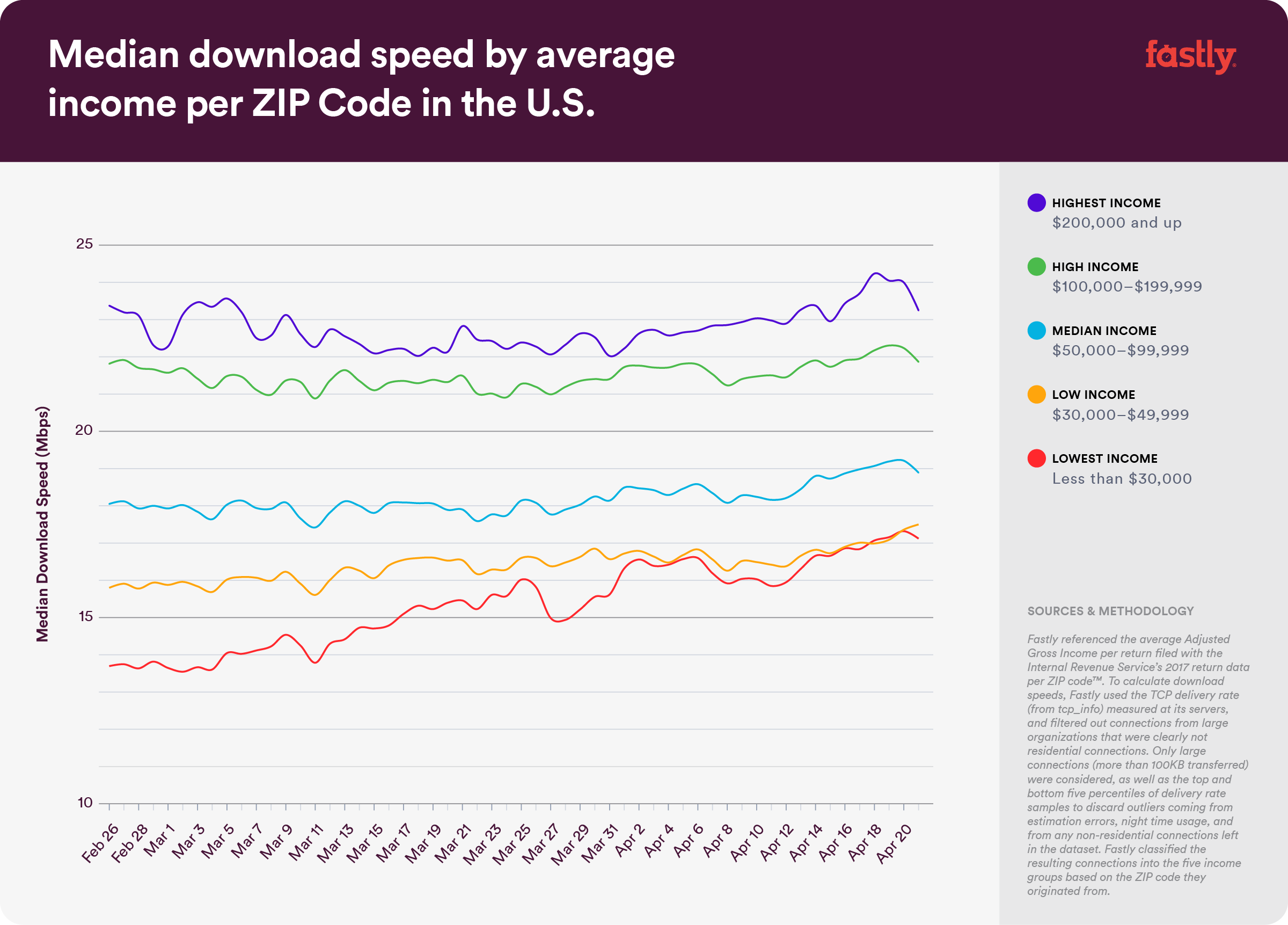
“We hypothesized that internet performance would vary by income, but we were surprised to see such a stark stratification,” said Fastly’s Chief Architect and Founder, Artur Bergman. “Because of Fastly’s visibility into telecommunications and ISP activity, as well as end user experience, we can connect threads that help to define the tangibility of the digital divide for many communities in the U.S. This becomes especially insightful as more and more people transition to a more web-reliant world in light of COVID-19. We observed relief for those segments of the population arise as a result of decisions from ISPs like Comcast and Cox Communications. Both implemented upgraded internet speeds in mid-March, which led to recognizable improvements in download speed for lower-income communities.”
As Web-Reliance Increases, Low Income Communities Could Struggle With Connectivity To understand the impact of the digital divide on low-income families during the COVID-19 pandemic, Fastly compared the median download speed between February 26 and April 21 for five brackets of annual average income. Download speed is a measure of the bandwidth that a user’s connection to our server achieves, which is typically lower than the connection speed users signed up for with their internet providers. The analysis shows ZIP Codes with median incomes in the highest brackets are seeing the highest download speeds, compared to ZIP Codes with the lowest median incomes, which are seeing the lowest download speeds. This reflects that, among other inequities, people in higher income neighborhoods have both access to higher bandwidth connectivity and the means to use it.
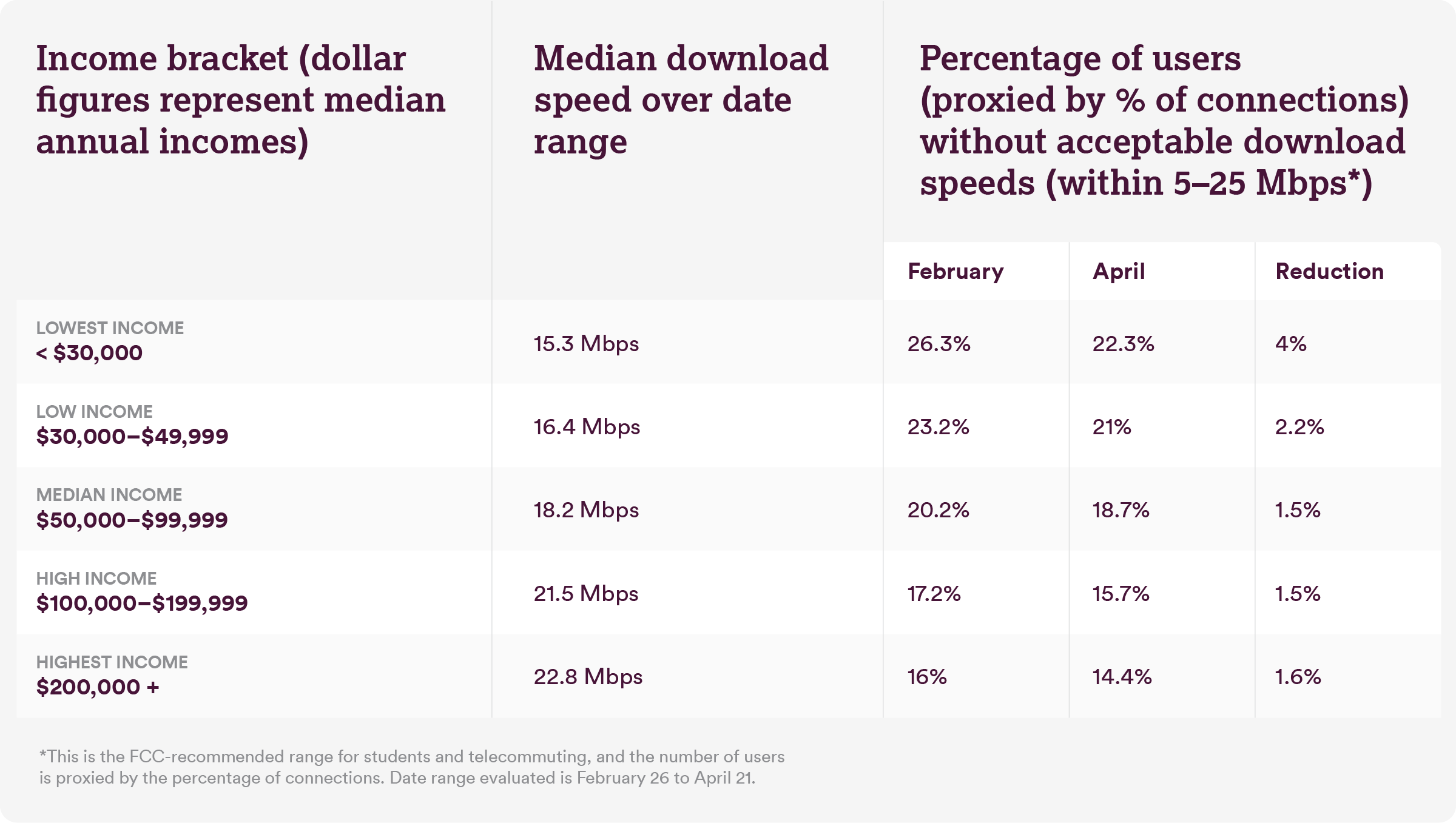
While an increase in download speed is seen within this date range in users of all income groups, users in the lowest income group saw the largest increase. This bracket had its median download speed increase from 13.7 Mbps to 17 Mbps, a 25 percent increase in download speed over a period of two months. Fastly analysis also shows that on February 26, 26.3 percent of the connections in the lower income bracket did not meet the minimum download speed recommended by the FCC for both telecommuting and online learning (five Megabits per second). However, from mid-March to mid-April, Fastly observed the biggest improvement in number of users without the minimum required download speeds in that same bracket, dropping from 26.3 percent to 22.3 percent.
ISPs Are Making a Difference On March 14, Comcast announced it would increase the speed of its Internet Essentials service (a package that is offered to all qualified low-income households for less than $10 a month) from 15 Mbps to 25 Mbps. Prior to the announcement, the median user in the lowest income bracket saw download speeds at 27.2 percent lower than the median user in the highest income bracket. Post-announcement, the download speed gap between a median user in the lowest compared to the highest income bracket reduced from 27.2 percent to 13 percent.
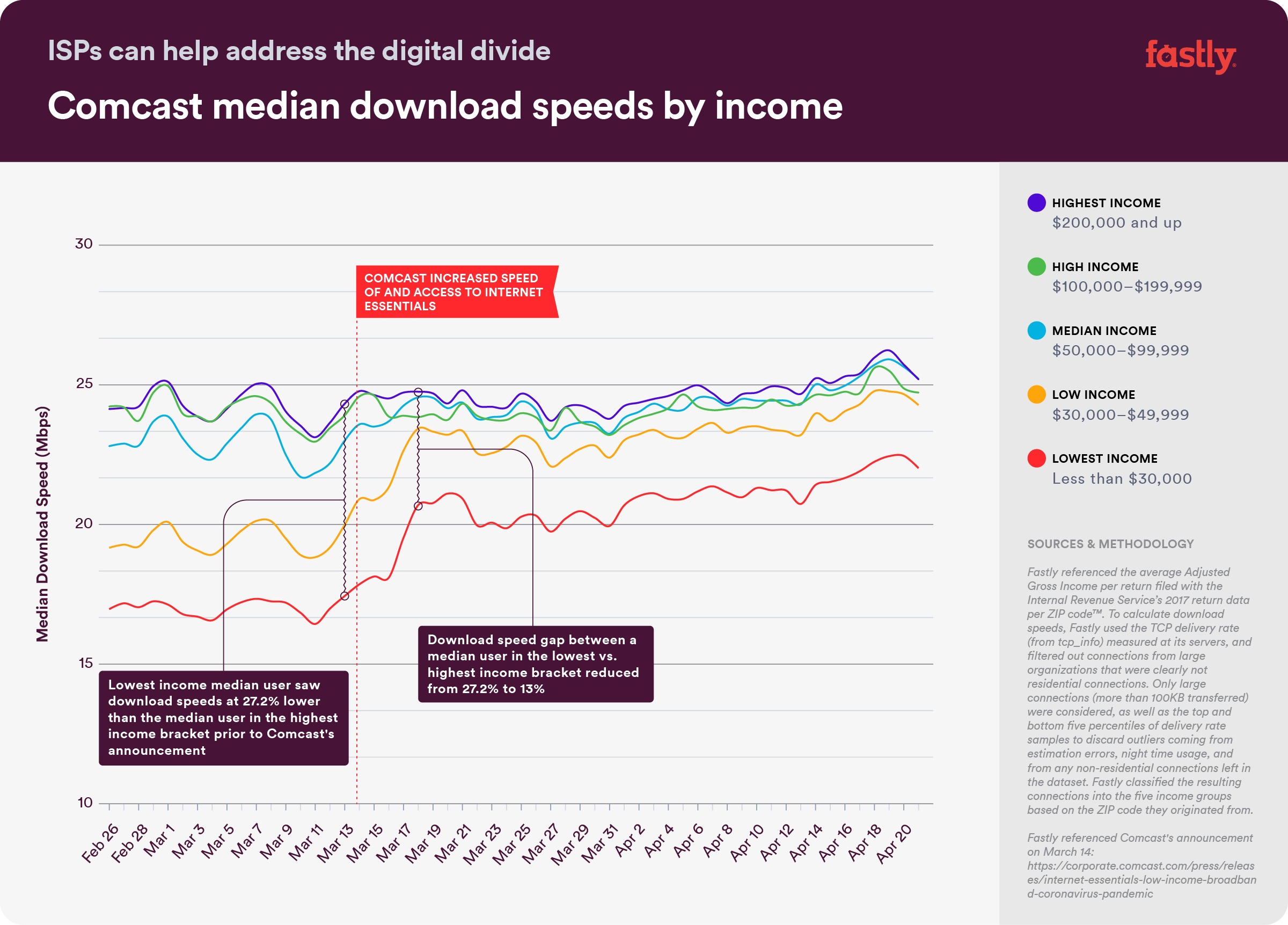
Also on March 14, Cox Communications announced a similar decision, upgrading its residential internet packages to 50 Mbps for 60 days. Prior to the announcement, the lowest income median user saw download speeds at 13.9 percent lower than the median user in the highest income bracket. Post-announcement, the download speed gap between a median user in the lowest compared to the highest income bracket reduced from 13.9 percent to 1.8 percent.
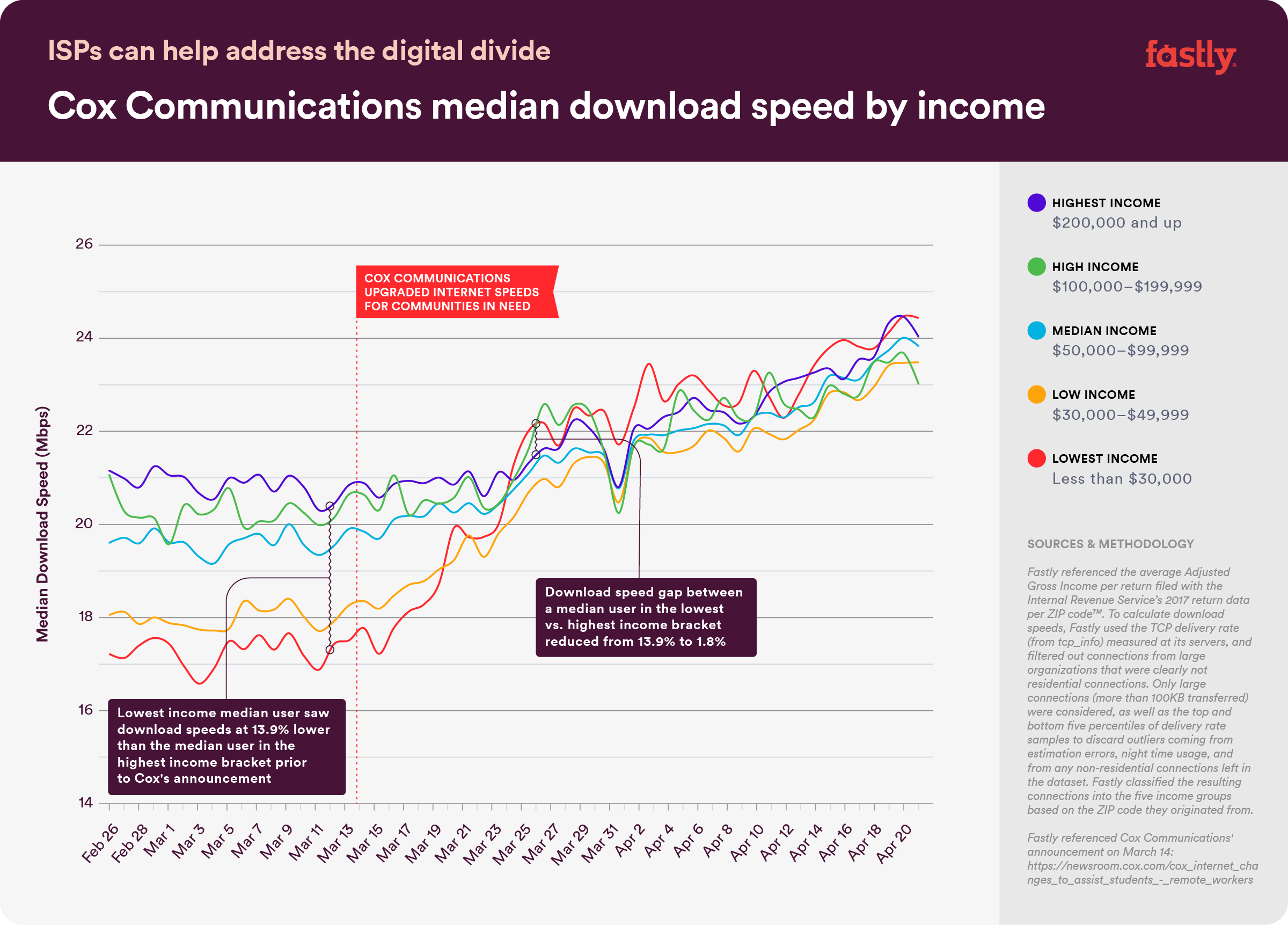
Likely as a result of these ISP decisions, Fastly observed the median download speed of all connections in the U.S. has increased from 17.9 Mbps on February 26, to 19 Mbps on April 21, a 6 percent increase over a period of two months.
About Fastly
Fastly helps people stay better connected with the things they love. Fastly’s edge cloud platform enables customers to create great digital experiences quickly, securely, and reliably by processing, serving, and securing our customers’ applications as close to their end-users as possible — at the edge of the internet. The platform is designed to take advantage of the modern internet, to be programmable, and to support agile software development. Fastly’s customers use our edge cloud platform to ensure concertgoers can buy tickets to the live events they love, travelers can book flights seamlessly and embark on their next great adventure, and sports fans can stream events in real time, across devices. They include many of the world’s most prominent companies, including Alaska Airlines, The New York Times, and Ticketmaster.
